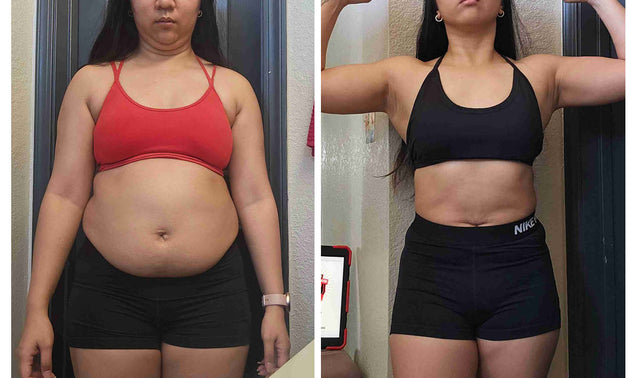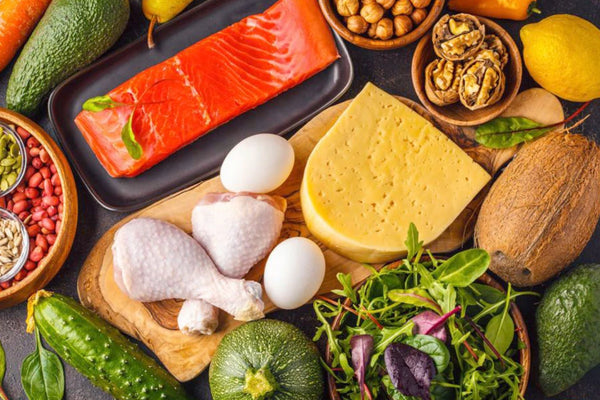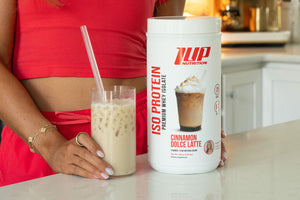What is the Whole30 Diet?
As the name suggests, the Whole30 Diet is a 30-day diet plan that aims to develop healthy eating habits, promote digestive health, and instill long-lasting changes to your nutritional habits that benefit you and, most importantly, are sustainable.
The Whole30 Diet is “designed to help you put an end to unhealthy cravings and habits, restore a healthy metabolism, heal your digestive tract and balance your immune system.”
Essentially, the creators of the Whole30 Diet attribute everything in your life from perceived energy levels to body composition to mood will improve if you overhaul your diet according to their guidelines.
Whole30 was created by then-husband and wife duo Dallas and Melissa Hartwig in 2009 as a nutritional “reset” of sorts that sought to improve an individuals health and wellness by promoting the consumption of “healthy” foods while eliminating foods that cause low energy.
We’ll get into the specifics of what you can and cannot eat on the Whole30 Diet down below, but first, let’s discuss some of the potential benefits touted by the creators.
What are the Proposed Benefits of the Whole30 Diet?
According to the creators of the Whole30 Diet, if you follow it for the whole 30 days, you:
“will change the way you think about food, it will change your tastes, it will change your habits and your cravings. It could, quite possibly, change the emotional relationship you have with food, and with your body. It has the potential to change the way you eat for the rest of your life.”
What Foods Can I Eat on the Whole30 Diet?
Like most popular fad diets, the Whole30 diet has its own list of approved and unapproved foods.
Deviate from the approved foods list and you must restart the challenge all over again according to the “rules” of the diet.
Foods allowed on the Whole30 diet include:
- Meat: Beef, bison, venison, pork, lamb, etc.
- Poultry: chicken, turkey, duck, etc.
- Fish and other seafood: Salmon, tuna, shrimp, crab, calamari, scallops, crab, lobster, etc.
- Eggs and egg whites
- Fruits (preferably fresh): strawberries, bananas, apples, blueberries, pears, etc.
- Vegetables: All forms of vegetables (starchy and non-starchy) are allowed.
- Nuts and nut butters: Almonds, pistachios, walnuts, pecans, etc.
- Seeds: Sunflower, pumpkin, chia, flax, etc.
- Select fats: Olive oil, coconut oil, clarified butter, etc.
What Foods Are Not Allowed on the Whole30 Diet?
The following list of foods are not allowed on the Whole 30 Diet:
- Added sugar, sugar alcohols, and sugar substitutes: refined white (table) sugar, honey, maple syrup, agave nectar, coconut sugar, date syrup, monk fruit extract, stevia, Splenda (sucralose), Equal, Nutrasweet, and xylitol.
- Alcohol and tobacco products (this also means you cannot cook with wine either)
- Grains: Wheat, oats, rye, barley, rice, quinoa (even though it is technically a seed), bulgur, farro, corn, sprouted grains, amaranth, buckwheat,etc.
- Legumes: This includes beans of all kinds (black, red, pinto, navy, white, kidney, lima, fava, etc.), peas, chickpeas, lentils, and peanuts. No peanut butter, either. This also includes all forms of soy: soy sauce, miso, tofu, tempeh, edamame, and soy lecithin.
- Dairy: This includes cow, goat, or sheep’s milk products like milk, cream, cheese, kefir, yogurt, sour cream, ice cream, or frozen yogurt.
- Soy and its derivatives: tofu, edamame, tempeh, soy sauce, and miso
- Certain food additives: Carrageenan, MSG, or sulfites.
- Processed (“junk”) foods: essentially anything that comes from a box or bag found in the grocery store is off limits. This also includes “recreations” of banned foods like coconut flour pancakes and waffles.
These approved and “off-limits” food lists are to be followed strictly for 30 days.
If you deviate in the slightest manner, say having a bite of cake at a work function, you have to restart the whole 30 day cycle all over again.
The reason for this strict adherence is that by doing so, you enable the body to “resent” in isolation of certain foods that could disrupt hormones or cause inflammation.
A Couple More Rules…
Snacking is generally discouraged on the Whole30 diet. The creators of the diet suggest that its followers should only eat three meals each day to “keep your hormones in a healthy rhythm.”[2]
This also includes making “mock” versions of banned foods -- cupcakes, cookies, pancakes, and other breads (cauliflower crust pizza) made of Whole30 approved ingredients.
Finally, followers of the diet are advised to not step on the scale or take any body measurements for 30 days.
According to Hartwig, Whole30 isn’t just about weight loss or improving body composition, it’s about improving your dietary habits and quality of life.
So, if you choose to follow the diet, you’ll need to toss out the bathroom scale, measuring tapes, bodpods, and calipers for the next 30 days.
You are, however, allowed to take progress photos on day 0 and day 31 (the day after you finish the diet).
Pros & Cons of the Whole30 Diet
As is the case with virtually all fad diets, Whole30 has some highlights, but it’s also filled with some not so bright spots as well as its fair share of contradictions.
Beginning with the good, Whole30 prioritizes eliminating junk food from the diet and consuming only whole foods. Anytime a diet program recommends reducing their intake of hyper-processed, micronutrient-poor foods and increasing their consumption of fruit and veggies is a win.
Additionally, Whole30 doesn’t have its followers on some obnoxiously low amount of calories to “drop 15 pounds in 3 days” like other fad diets and detoxes promote. The plan focuses on revamping your dietary habits and helping its adherents focus on things besides the scale.
A final benefit (for some) is that you don’t have to track calories. However, we should mention that if you are trying to lose weight, we do suggest that you track your calories in some form or fashion so you know whether or not you are making progress with your weight loss goals.
Now for the bad.
The creators of the diet make a lot of bold claims...virtually all of which are not backed by any considerable amount of scientific evidence. Anecdote is not strong enough evidence to adopt a new way of eating, especially when you’re making such claims as your diet can “improve” mental health, infertility, bipolar disorder, lupus, fibromyalgia, etc.
Furthermore, the diet is incredibly restrictive, and here we run into one of the big contradictions of the diet. Hartwig states that one of the goals of Whole30 is to “change the emotional relationship you have with food.”
However, placing such strict rules and limitations on individuals, can lead to those same individuals developing disordered eating patterns as well as an unhealthy relationship with food.
Yes, getting people to eat less junk food is a good thing, but telling someone that they have to “restart” the diet all over if they have a small taste of a non-approved Whole30 food is a bit extreme.
Additionally, the diet bans certain foods that have no need for banning.
Dairy, legumes, and whole grains can all be considered healthy foods and have been shown to confer benefits to individuals. Dairy is high in protein and calcium; legumes and whole grains are high in fiber, B vitamins, iron and zinc.
Moreover grains and legumes are actually quite healthy as they have been shown to reduce inflammation, increase “good” gut bacteria, and decrease cholesterol levels.[3,4,5]
If someone has a medically diagnosed condition or allergy, then they should avoid those foods. However, if you don’t, then there is no reason to remove these foods from your diet for no reason.
Finally, Whole30 is generally against all processed foods. Yet, they allow for fruit juice to be consumed and used in the preparation of recipes. By all accounts, fruit juice is nothing but glorified sugar water, void of the fiber and many micronutrients obtained from eating the whole fruit.
What Happens After 30 Days on Whole30 Diet?
After you’ve successfully run the gauntlet of the Whole30 diet, you progress to phase 2 -- the reintroduction phase.
During this period, you will slowly reintroduce foods into your dialy diet (usually one at a time) that were banned and see how they make you feel in regard to your energy levels, cognitive function, immune system, and digestion.
The suggested method for reintroduction is to eat a food on day one, then for the next two days consume a Whole30-approved diet, while keeping an eye out for any adverse reactions to the reintroduced food.
Barring any setbacks or weird reactions, you return that food to your diet and reintroduce a new food on day 5. Keep repeating this process until you’ve reintroduced as many foods as you like.
As you can imagine, these phase is incredibly tedious, not to mention unnecessary for the vast majority of people that are only looking to lose a few pounds.
Takeaway
The Whole30 diet is a 30-day diet that seeks to help people eliminate processed junk from their diets and focus on eating real, whole food. It makes a lot of bold claims regarding the benefits that can be achieved from following the diet, most of which have no scientific backing whatsoever.
Still, the average people would stand to benefit from avoiding excessive intake of sugar, alcohol, and processed foods. But...
Segmenting foods into “good” and “bad” lists, eliminating entire food groups, advising against snacking because it “disrupts hormones”, and all the other questionable advice promoted by the Whole30 diet makes it a diet that simply isn’t going to be sustainable for most people.
Cleaning up the diet is a great and noble endeavor, but making it overly complicated in the manner that most fad diets do is simply not necessary.






